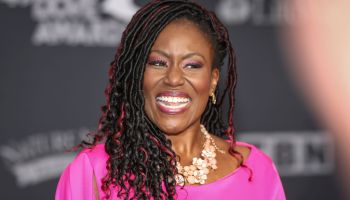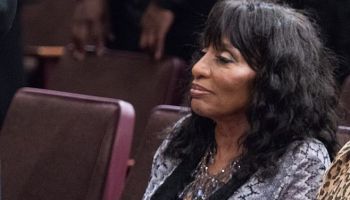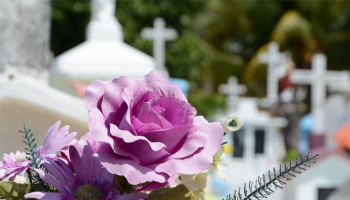An estimated 30 million women in the United States suffer from thinning hair.
Hair Loss Treatments
If there’s one thing we can all agree on, it’s that we don’t like losing our hair. Those extra strands clogging the shower drain or rolling around the bathroom floor like tumbleweeds in the Mojave desert can send us to the mirror in horror, wondering if it’s really true: Are we going bald?
OK, maybe not bald for most of us, but thinning hair is equally distressing. Especially when you consider the voluminous manes that virtually every woman walking down the runway or red carpet seems to be sporting.
Some women are inclined to think that hair loss is simply the result of getting older, but quite often, the real culprit behind those falling strands is something completely different. Something you may, in fact, be able to correct!
Let’s start with the facts. An estimated 30 million women in the United States suffer from thinning hair. Hair loss affects 50 percent of women over the age of 50. And while it may seem like this is a growing problem among females, in reality, according to Valerie Callender, board certified dermatologist and Nioxin Expert Consultant, it’s because more women today are seeking treatment. “This can be traumatic for anyone. Women, in particular, are eager to correct this because it can affect self-esteem, confidence and relationships.”
Types of Hair Loss
There are basically four types of hair loss: Female pattern hair loss, which occurs mainly on the vertex and crown area and is a diffuse loss or thinning; traction alopecia, which is the result of hair breakage; alopecia areata, which leads to bald spots; and telogen effluvium, which is a diffuse loss of hair all over.
The type of hair loss you have can result from genetics, a medical condition, lifestyle or other disorder.
Causes of Hair Loss
According to Callender, hair breakage or traction alopecia is the most common type of hair loss. It can result from the overuse of heated styling tools (blow-dryer, flatiron), chemical treatments (hair dyes, perms), or ponytails, extensions or braids that are too tight. Callender said this type of hair loss can be reversed if caught early, but it could also lead to permanent hair loss due to damaged hair follicles.
On the other hand, female pattern hair loss (which is also very common), is largely based on hereditary and postmenopausal factors. Alopecia areata is the result of stress, and telogen effluvium and can be caused by pregnancy, diet, thyroid disorders or anemia. Birth-control pills, surgery or testosterone supplements can also contribute to hair loss.
But the causes don’t stop there. Certain scalp disorders can also wreak havoc on your hair.
Seborrheic dermatitis is an exaggerated form of dandruff caused by yeast (malassezia). It can result in inflammation of the hair follicles. After a while, a red, itchy, dry rash develops on the scalp and can also develop on the face as well around the eyebrow area, nose and ears. Recommended treatments include ZPT (zinc pyrithione) shampoos and ketoconazole (or Nizoral) shampoo.
Psoriasis occurs on the scalp and body and is caused by the immune system causing a proliferation of skin cells. Basically, the cells don’t shed and build up. Top treatments include a topical cortisone, topical Vitamin D and tar shampoo.
Cicatricial or scarring alopecia is an intense inflammation and permanent destruction of hair follicles. And while the cause is unknown, treatments include doxycycline and topical cortisones.
When it comes to treatments, there are many. Some good and some not so good, so it’s important to do your homework and not believe everything you see in an advertisement. “Your best source of accurate information is from a trusted dermatologist,” advised Callender.
Here are the top hair loss treatments she recommends:
Hair transplantation is a surgical procedure in which the hair is taken from the back of the scalp and transferred to top or front. This tends to be a very effective treatment, although the most extreme — and expensive. Costs range from $5,000 to $8,000.
Nioxin Three-Part Hair and Scalp System is an at-home treatment that runs $40. It essentially helps restore the hair into a healthy condition. Each Nioxin system is customized to address specific hair and scalp needs such as fine, medium to coarse, chemically-treated or natural, normal to thin-looking or noticeably thinning. The three-part process cleanses, restores and activates the hair and scalp to achieve thicker-looking hair and is available at Nioxin salons across the country.
The laser comb by Lexington International is a low-energy light treatment that delivers energy to stimulate hair follicles. It has FDA approval for men, but clinical studies are currently taking place for approval and effectiveness in women.
Natural treatments include biotin supplements, iron supplements and a healthy diet. “Don’t underestimate the importance of a diet high in protein,” said Callender. “This is crucial because protein deficiency causes hair loss.” A diet rich in omega-3 fatty acids also helps to avoid dry, brittle hair and breakage.
Callender’s last piece of advice? Be patient. “Hair grows in cycles and it can take up to six months for hair loss to stop and correct itself. Don’t give up on finding a solution that works for you.”
source: The Belle Report















